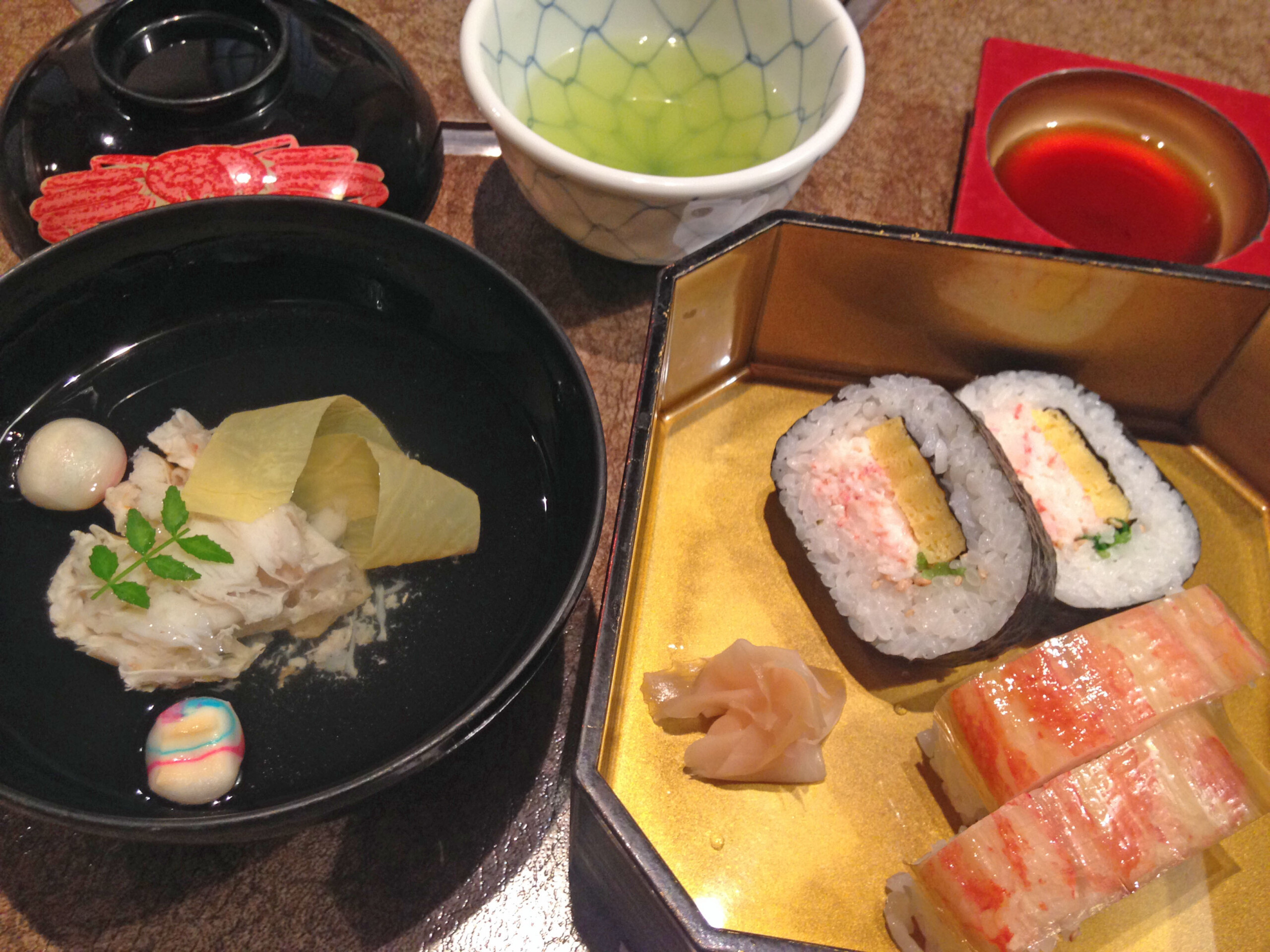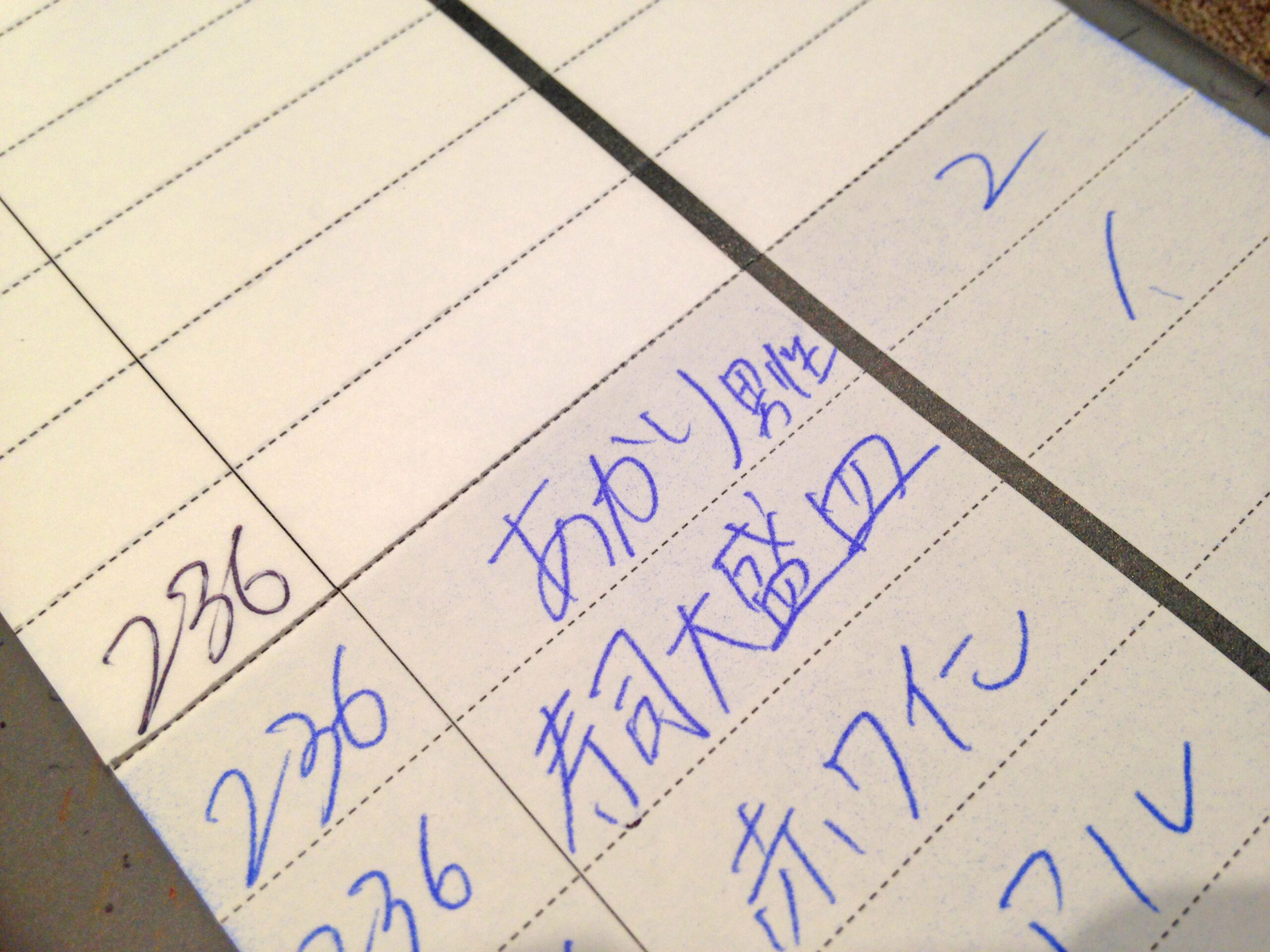When I was last in Japan a couple of years ago, I went with family to try the Kani Douraku (かに道楽) restaurant chain. Kani Douraku (translated as “crab hobby”) is best known for having most dishes incorporating crab in some way. Also, when you walk in — at least to the one in Kyoto — there’s a stream with crabs puttering about.

Although I thoroughly enjoyed just about every dish I tried, I couldn’t help but notice something (in Japanese) stand out on the bill:

The first line written in blue ink reads あかり男性. The word あかり (akari) is harmless enough, meaning “light” or “glow,” referring to the name of the set menu. The second, 男性 (dansei), however can be translated as “male,” or “man;” to breakdown the character for man, it represents power 力 lifting a rice paddy 田. For reference, the Japanese (and Chinese) character for woman is 女, and female 女性 (josei).
In Japan, I have seen set meals specifically aimed at women listed on menus, but in Kani Douraku’s case, this wasn’t made obvious on the menu. (link is a .pdf) Then again, when the waitress took our order, she asked which of the three of us (two males, one female) would be eating the akari course.
To confirm, it would have been the same price, but presumably less food per course for women.
In Chinese, there’s a phrase called 代考 (dàikǎo), literally “replace + test,” which means to take a test for someone else. It’s not necessarily unusual anywhere in the world, particularly with remote learning being a thing, but in China, it’s paydirt. Using that bizarre analogy, perhaps there’s a market for “substitute meal ordering?” Just make sure the waitstaff are changing shifts….

What’s the big deal. Different cultures. I don’t care if they seperate meals for men and women. They are are far more respectful culture than the new garbage PC crap taking over us in the west.
I appreciate your comment, SMR. Different culture it may be, but they probably shouldn’t have multiple languages on their official website if they didn’t expect or want foreign visitors. With new more welcoming legislation in the works for skilled workers, and international tourism arrivals to Japan booming again — save perhaps from the biggest market, China — divergent opinions will inevitably manifest.
Anyway, I didn’t opine on the separate checks because that wasn’t the purpose of the post. Just thought it was a nuance worth pointing out to BoardingArea readers (particularly those who don’t read Japanese/Chinese).
I found it a fascinating cultural reference but then again I enjoy learning things just because they’re interesting. Different strokes, I suppose.
It might have something to do with how they serve/cut the portion. At an edomae sushi place, the chef cuts maki into three pieces for women and two pieces for men. It’s the same portion sizing.
I appreciate your reply, JPTraveler. That could be the case, but then why distinguish between male/female on the bill?
referring to the name of the set menu. The second, 男性 (dansei), however can be translated as “male,” or “man;” to breakdown the character for man
To confirm, it would have been the same price, but presumably less food per course for women.